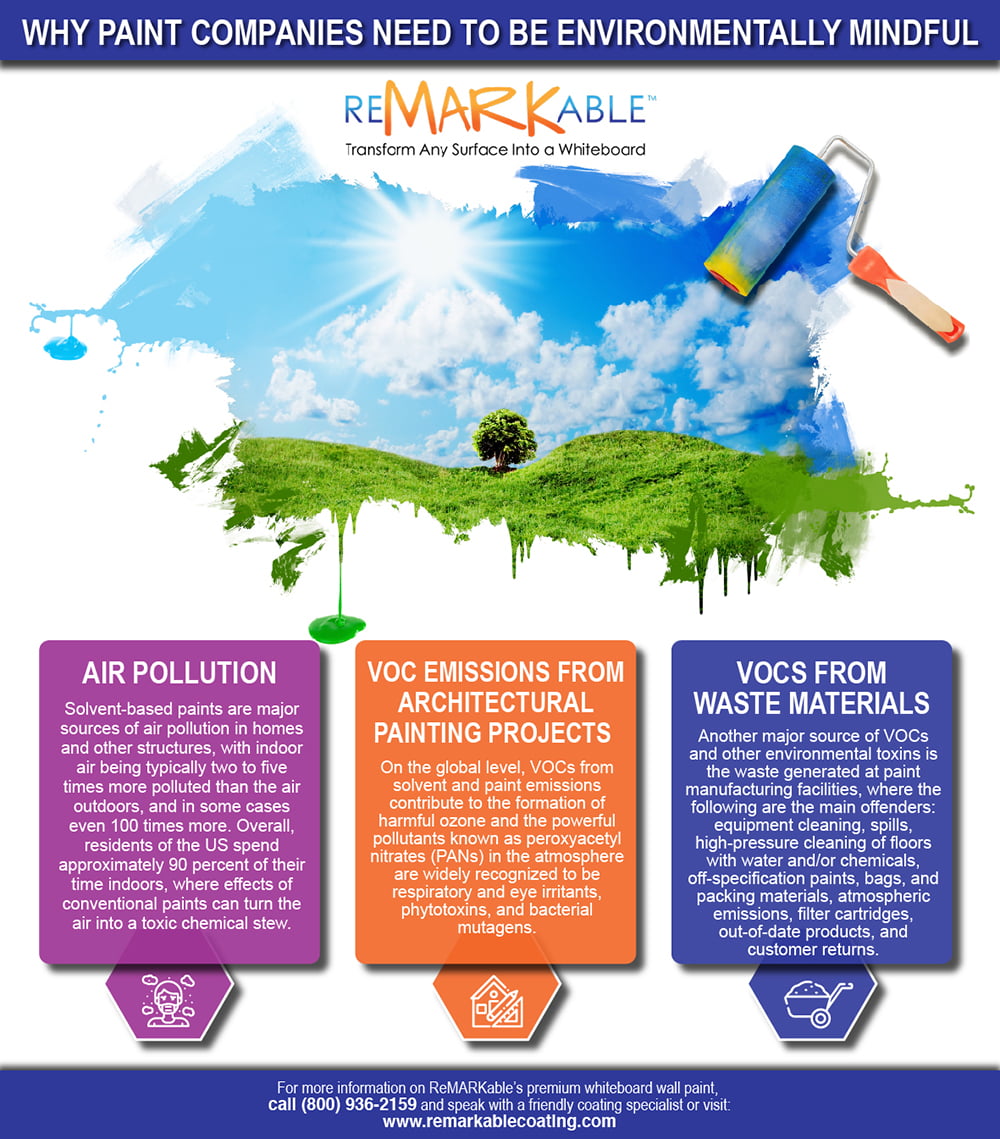
Why Paint Companies Need to Be Environmentally Mindful
In recent years, driven by consumer demand, public feeling, and well-publicized regulatory actions by governments around the world, society has become increasingly aware of the potential impact of industry on the environment and human health. So, along with other businesses, paint and coatings manufacturers are being held accountable for the effects of their actions and products on humanity and Earth’s ecosystem. Combined with a sincere concern on the part of many paint companies, this situation has led to an array of new projects aimed at enhancing environmental health by developing more eco-friendly products.
In light of this trend and the possible climate change crisis, paint manufacturers need to remain especially mindful of their responsibility to the planet because of all the chemically-based products on the market, paints, lacquers, and varnishes have some of the most powerful effects on Earth’s ecosystem and the public health. Solvents, styrene, softening agents, and biocides (poisonous substances that kill life forms) are just a few of the many ingredients in paints that pose serious ecological and toxicological risks during their production, application, use, and eventual disposal. These risks involve both indoor and natural environments and should be considered by all paint companies when formulating their products.
Air Pollution
For example, solvent-based paints are major sources of air pollution in homes and other structures, with indoor air being typically two to five times more polluted than the air outdoors and in some cases even 100 times more. Overall, residents of the US spend approximately 90 percent of their time indoors, where the effects of conventional paints can turn the air into a toxic chemical stew. Even years after they have dried, paints continue to emit petroleum-based solvents known as volatile organic compounds (VOCs) as they cure. Emissions studies conducted by the US Environmental Protection Agency (EPA) in the state of California show that surface coatings such as paints are responsible for 9% of all VOC emissions. Thus, the EPA includes indoor air, which typically contains vast amounts of VOCs produced by paint, on its list of top-five environmental hazards.
Indoor concentrations of some pollutants have increased in recent decades due to factors such as increasingly energy-efficient building construction methods (when the structures lack enough ventilation to ensure sufficient air exchange), and the expanded use of synthetic building materials, home furnishings, personal care products, pesticides, and household cleaners. In addition, those who are most susceptible to the harmful effects of air pollution (e.g., young children, older adults, and people with cardiovascular or respiratory issues) tend to spend even more time indoors than the US average of 90%.
VOC Emissions from Architectural Painting Projects
In addition, studies have shown that the cumulative VOC emissions from architectural painting projects exceed the combined emissions from a variety of other industrial operations. On the global level, VOCs from solvent and paint emissions contribute to the formation of harmful ozone and the potent pollutants known as peroxyacetyl nitrates (PANs) in the atmosphere. PANs are widely recognized to be respiratory and eye irritants, phytotoxins (substances that are toxic to the growth of plants), and bacterial mutagens (substances that cause genetic mutations in bacteria). However, the most severe biological effects of PANs are their phytotoxic quality, which results in injury to all forms of plant life.
VOCs from Waste Materials
According to the EPA, another major source of VOCs and other environmental toxins is the waste generated at paint manufacturing facilities, where the following are the main offenders: equipment cleaning, spills, high-pressure cleaning of floors with water and/or chemicals, off-specification paints, bags, and packing materials, atmospheric emissions, filter cartridges, out-of-date products, and customer returns. In recent years, the paint and coatings industry has worked diligently to address issues related to almost all of these areas. The success of these efforts has been noted by many environmental watchdog groups, which maintain that while there is still much room for improvement, paint and coatings producers are making strides toward lessening their impact on the planet.
And as a response to the environmental and health concerns voiced by government agencies, environmental groups, and the public, some paint manufacturers are now offering eco-friendly alternatives in their product lines. In other words, driven by consumer demand and regulatory pressure, paint and coating formulators, along with makers of chemical additives for these materials, are starting to make products with improved environmental and health performance.
Modern paints and coatings are complex mixtures of film-forming ingredients, fillers, pigments, and a variety of additives. Many of the chemicals customarily used as paint and coating ingredients pose significant risks to the ecosystem and human health. However, as mentioned, prompted by ever-increasing governmental regulations and growing user demand for healthy, sustainable products, the paint, and coatings industry has begun to supply new lines with notably improved environmental and health properties. And thanks to a continued focus on research and innovation, many of these newer eco-friendly paints and coatings have achieved equal status with conventional products in terms of performance, ease of application, and durability.
This development began with manufacturers’ efforts to comply with government safety and health regulations, but now, consumers, contractors, and building managers are becoming more and more conscious of the social and environmental impacts of the products they use and are demanding paints and coatings that have reduced environmental footprints and better health effects. In general, the advances in paint and coating technology related to environmental impact have come as a result of several factors, including the development of better formulation technologies and the availability of new additives. Thus, the current state of eco-friendly paint manufacturing is a result of the gradual buildup of many minor innovations that have grown into major advances in the environmentally sound production and use of paints.
Over the past decade, the manufacture of eco-friendly paints and coatings has grown significantly, and this technological achievement has been accelerated by advances in performance capabilities and reductions in VOC-producing ingredients. The main focus in developing new coatings for both architectural and industrial applications has been on technology that allows for maximum performance while still meeting stringent VOC and emissions requirements.
In addition to paint formulators developing better methods for combining paint components, the companies supplying them are also now looking for ways to provide more environmentally sustainable chemicals to use in their formulations. And many paint companies, such as ReMARKable, are encouraging suppliers to engage in even more sustainable production practices to help reduce the effects of climate change.
LEED (Leadership in Energy and Environmental Design)
Thus, the constituents of paint have impacts on environmental and social responsibility that go beyond just unpleasant odors and VOCs. And whether their clients believe in the reality of climate change or not, all paint companies need to change their focus toward manufacturing products that fall within environmental safety standards. Green endorsement programs such as LEED (Leadership in Energy and Environmental Design), the world’s most widely used rating system for eco-friendly construction, provide a framework that building project groups can apply to create healthful, highly efficient, cost-effective green structures. This is especially important today, because, as discussed above, of all chemically-based products on the market, paints, lacquers, and varnishes are among the most potentially damaging to the public health and Earth’s precious ecosystem.
ReMARKable whiteboard paint products have been compliance tested meeting or exceeding CDPH/EHLB/Standard Method V1.2-2017. Our formulas are low in volatile organic compounds and odors, meaning that virtually no harmful chemicals or fumes enter the atmosphere during their production, application, and use. Thus, ReMARKable is extremely kind to the environment and provides an example for other paint manufacturers to follow in the industry’s efforts to meet growing consumer demand and government regulations on environmentally safe paints and coatings. The company’s compliance with LEED standards shows that the private sector can have a genuinely positive impact in addressing the world’s greatest health and environmental challenges without having to sacrifice the pursuit of success in the process.


























































































![ReMARKable’s Winter Sale is Here! [25% Off + Free Shipping]](https://www.remarkablecoating.com/wp-content/uploads/2018/01/Red-Tag-Winter-Fashion-Facebook-Post-1-440x264.png)















![Drive Your Organization Into Openness and Watch it Expand [20% Off Whiteboard Paint]](https://www.remarkablecoating.com/wp-content/uploads/2016/04/Drive-Your-Organization-Into-Openness-and-Watch-It-Expand.-1-440x264.jpg)

![30% Off St Patrick’s Day Sale! [Details Inside]](https://www.remarkablecoating.com/wp-content/uploads/2016/03/Glorious-1-440x264.png)


![Giant Leaps Forward Require Big Spaces. [Leap Year Sale Event!]](https://www.remarkablecoating.com/wp-content/uploads/2016/02/Giant-Leaps-ForwardRequire-Big-Spaces-440x264.jpg)

















![ReMARKable Summer Sale 2018 [28% Off Whiteboard Paint]](https://www.remarkablecoating.com/wp-content/uploads/2018/06/Blue-Simple-Line-Beach-Facebook-Post-1-440x264.png)






































































































































































































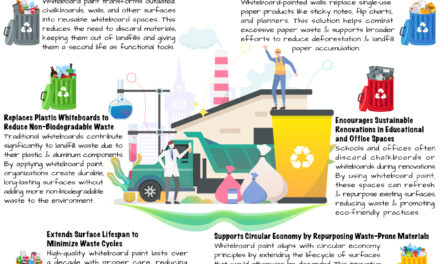



















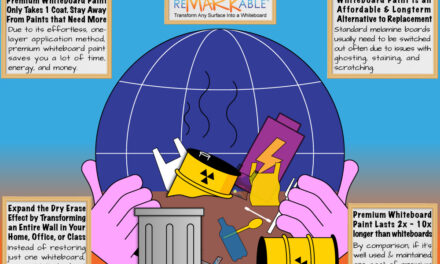








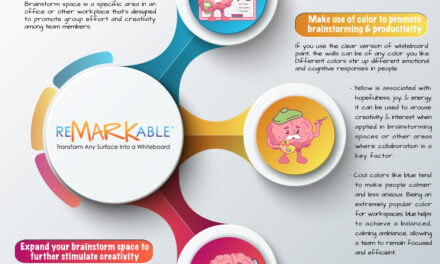




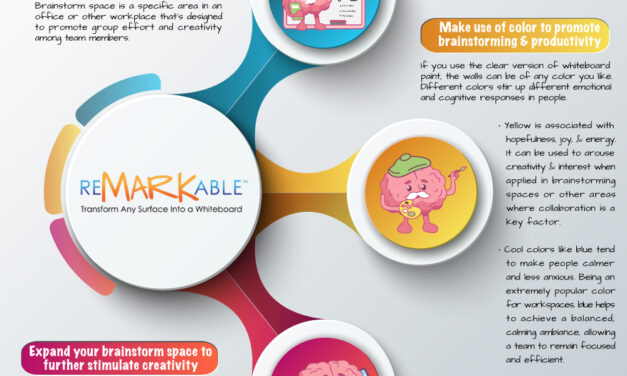












0 Comments